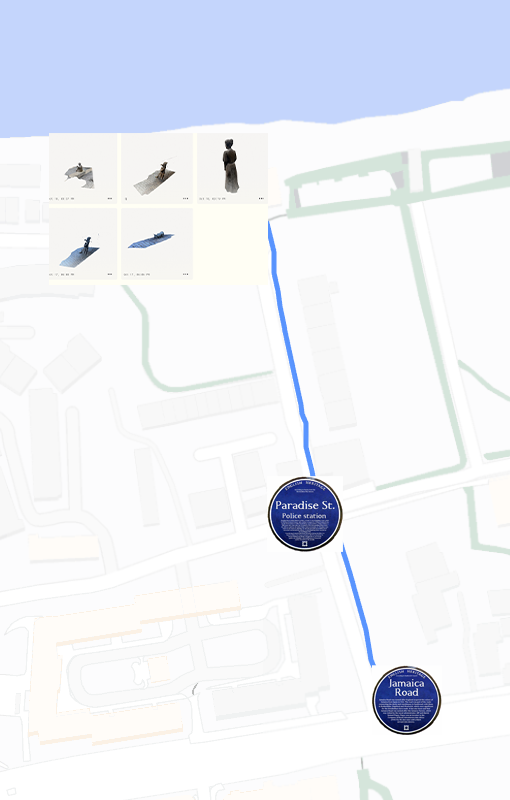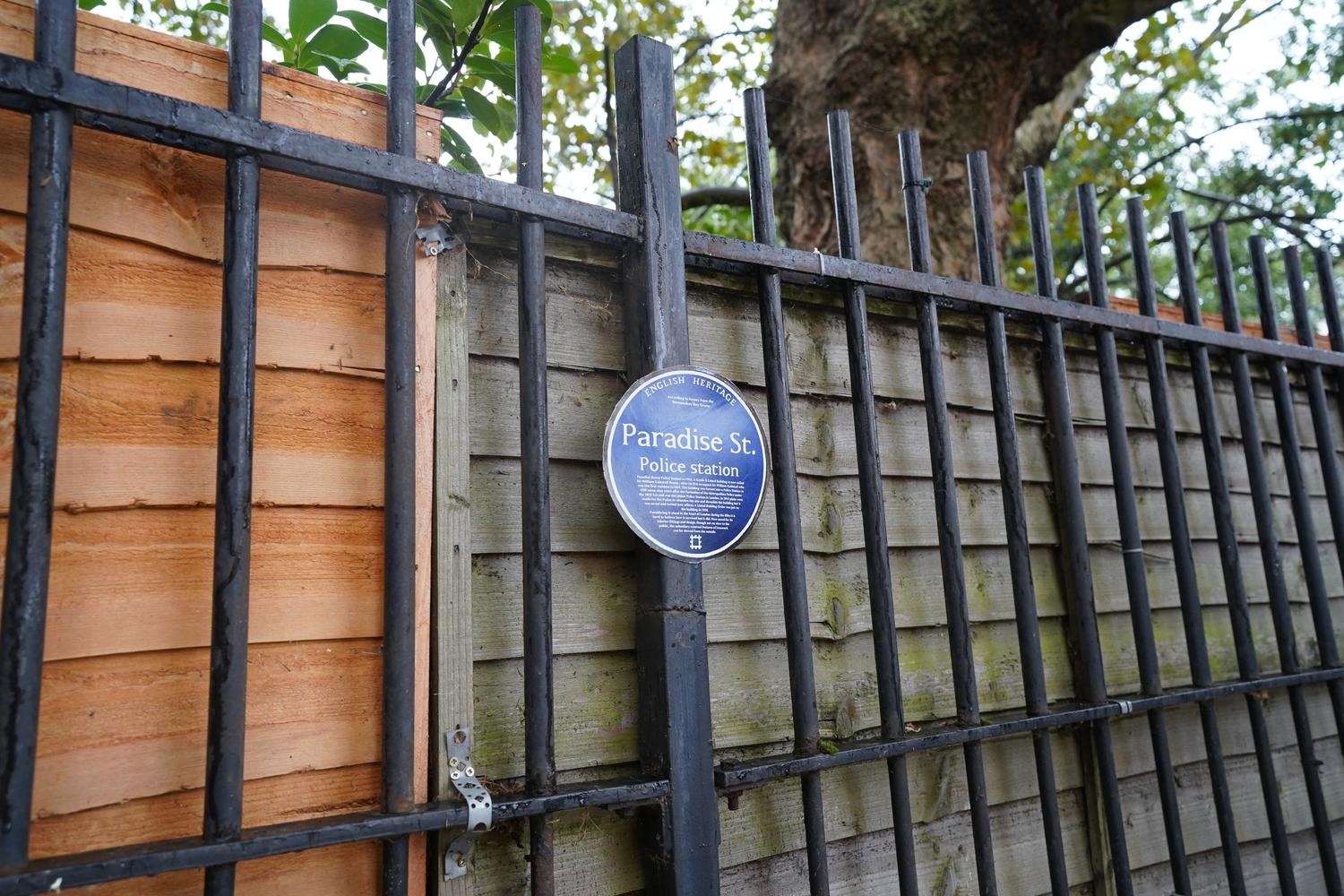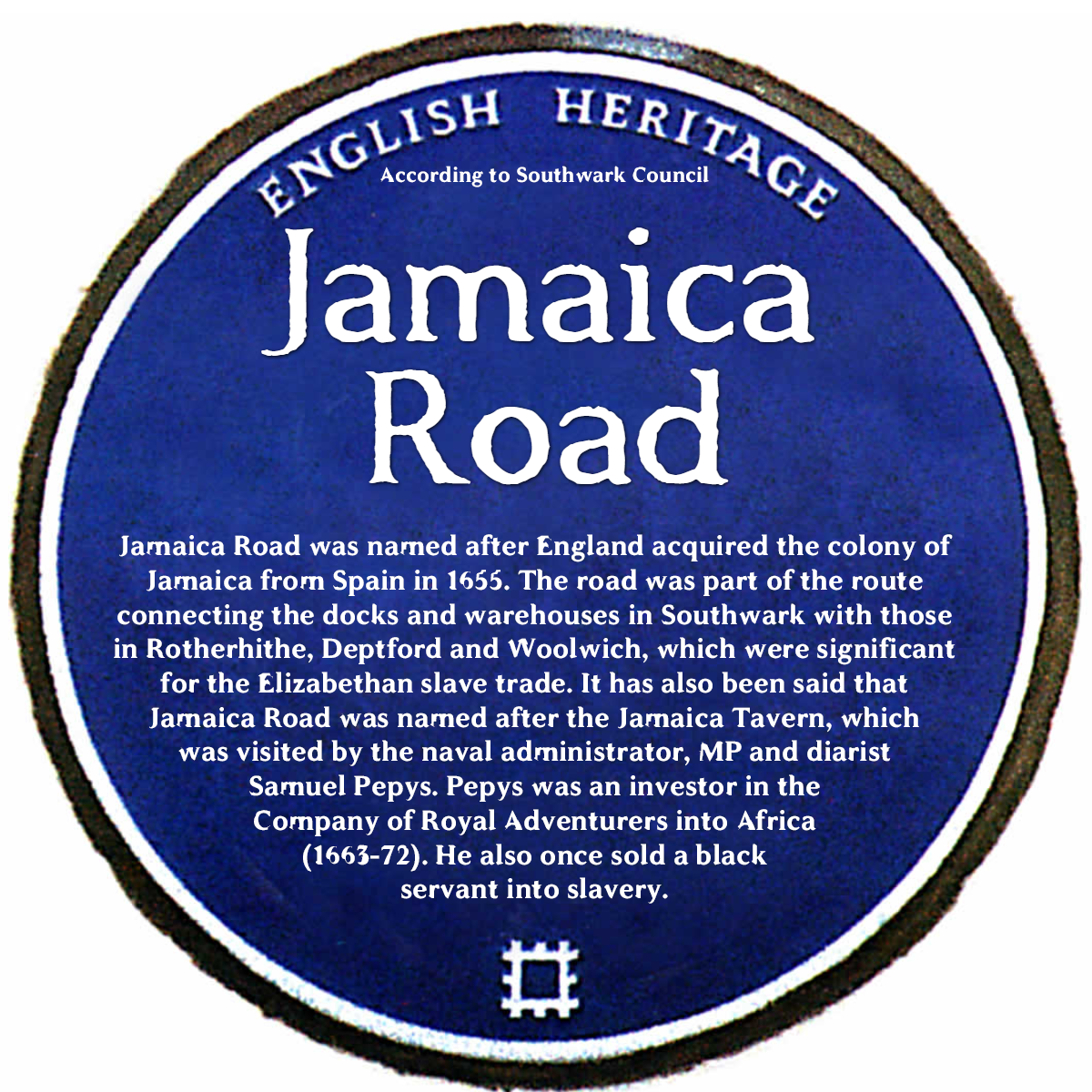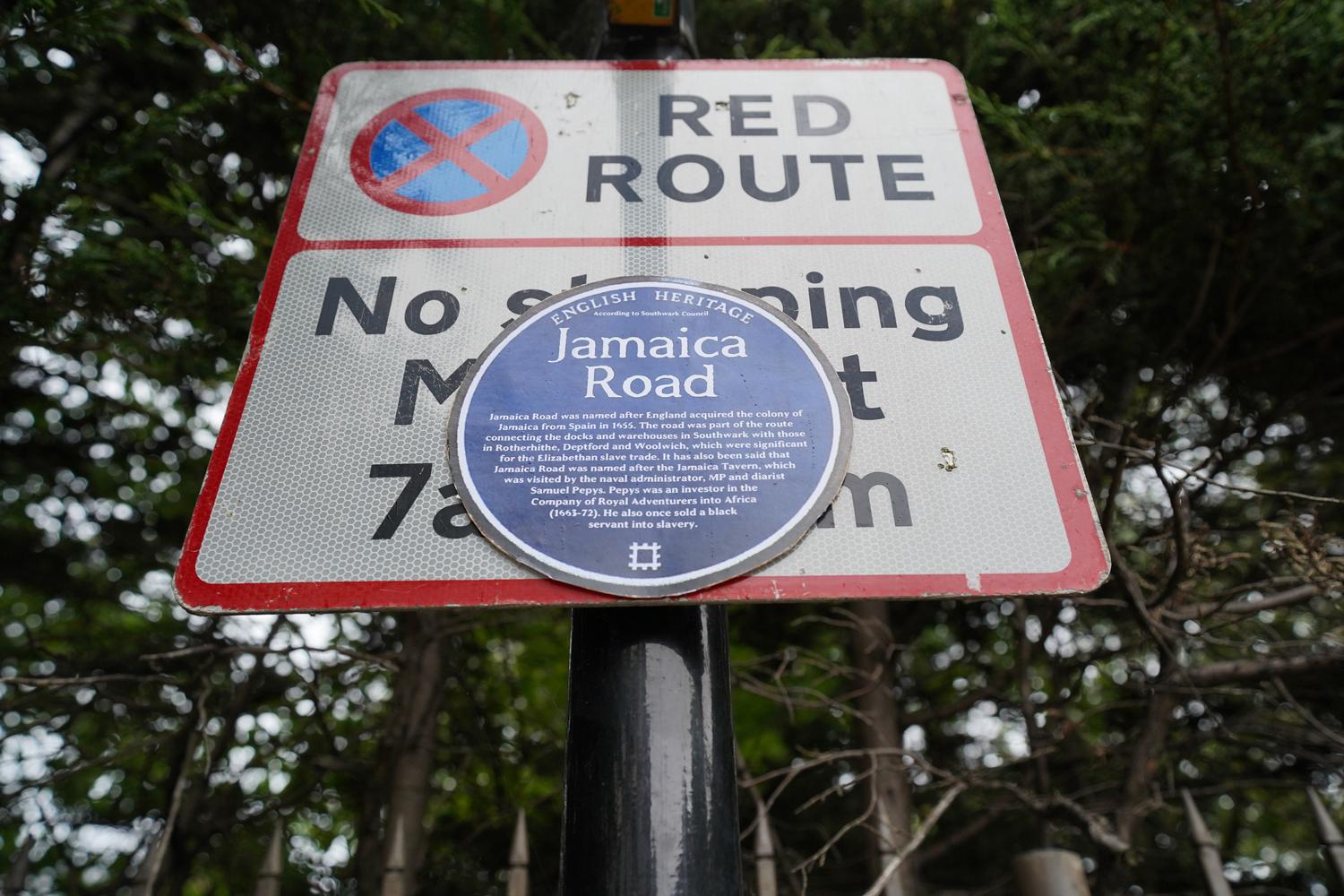Live Intervention
For the live intervention, I decided to make a 3D scanning worksop of Dr. Salter’s daydream statues made by Diane Gorvin in 1991. The idea behind this workshop was to purposefully focus on a different history than the majority covered along the queue. Most of the queue is filled with docks and wharves and iconic buildings representing the hard power of British history. I wanted to focus on a more local and impactful history, the ones of the Salter’s family. The statues are also located right in front of Edward III’s Manor House, the direct ancestor of Queen Elizabeth II, which adds another layer of distraction to an alternative history. Dr. Salter was, amongst a large list of other things, a doctor famous for offering free health check ups and cures to the local people of Bermondsey back when there were mainly slumps. Bermondsey was a poor area with poor hygiene and most people worked in the nearby factories, leading to a large number of diseases and injuries. Dr Alfred Salter was one of the first doctors in the UK to offer treatment without asking for any fees. This ideology is what a lot of people consider to be the first step towards the making of the NHS, a free and accessible healthcare. His wife, Ada Salter, is also an extremely influential figure of the early 20th century. Her actions led to social reforms in Bermondsey, creating Settlement houses in Bermondsey to give free access to education and other social opportunities. She also was heavily involved in politics and was a big figure in British feminism, as she was the first ever female mayor of Bermondsey and of any London borough back in 1922. She was also a big voice for incorporating more green spaces in London, planting more than 9000 trees in the 1930s and also having her own garden made by herself in Southwark park, the start of the queue. The collection of statues is also accompanied by their daughter, Joyce Salter, who tragically passed away at the age of 8 after the scarlet fever ravaged the slums. The last sculpture is one of their cat, which adds a feeling of warmth to the family.

The script I wrote for the instructions of the intervention:
Welcome to the new queue for our beloved icon: Queen Elizabeth the second. As you all know… lying instate for 10 days last year in September and a massive queue was organised from the park behind us all the way to Westminster hall in the parliament to pay your homage and respect to the queen. Being one of the biggest global cultural icons of our generation (generations), the scale of it was predictable. To organise this mass mourning, a queue was organised just like for her mother, Churchill and many more. The path itself was designed to be part of this historical week. The famous queue walks you through many iconic historical buildings such as the numerous docks, the TATE modern, the Globe, Southbank centre, the London Eye, almost like a tourist attraction. The queue however has a noticeable lack of explanation regarding the origin of some of these iconic buildings. All the wharfs were created out of the colonial success of the UK during their imperial era. However, refurbished into luxury flats, they give this aesthetic impression of historical success, a history that led the UK to be one of the most powerful and influential countries on the planet. Same goes to the TATE modern who we know as the most influential contemporary museum in the UK, wouldn’t exist if it was for past investment into the transatlantic slave trade, or that the Guy's and St Thomas' hospital’s, which you can find at the end of the path, main founders directly invested in the South Sea company and East Asia Company, one responsible for slavery, the other for colonial dominance. This missing history is what can fuel a feeling of extreme patriotism, especially if you were to queue in front of these buildings for 24h. The success is shown, but not the history. But! New technologies, especially 3D, allow us today to document our surroundings in a much more personal and interactive way. We are here to document this history by focusing not on this 1350 royal manor house from the direct ancestor of Queen Elizabeth the second, but rather on a different history, the Dr. Salter’s daydream made by Diane Gorvin in 1991. We are going to 3d scan it some please if you could download the app Polycam on your phone, if not you can use mine. You are then going to send it to me where I can incorporate it in my digital map entitled: the Queue, or the Queen. Since we are on the theme of British culture and history, you guys are going to queue from here to the statue, which is the first 200 metres of the queue and will take 20 min, the same pace as the queue to see the queen. You will be spaced out over this following 200m and wait for your turn to 3d scan one of the 4 statues. Each of you will be placed …m from one another so please take the place of the person in front of you when they advance. 3 different blue plaques will be placed as markers to pace out the queue, and as an example to what you can learn along the rest of the queue. Once you are done scanning, you will go back to the start of the queue. Now please follow me as I will place you evenly along this path. Thank you very much and let the queue begin!




The idea behind this intervention was to create a queue but for a different purpose than for the Queen. I also wanted to instruct a little bit more about the start of the queue as those few roads already have a lot of history. I therefore created the iconic Blue Plaque design and repurpose them to comment on the history of the few roads we walked through. I placed them strategically throughout the path to act as markers to pace the queue. The actual pace of the queue was mimicked in this intervention. After calculations, I figured that since the path I wanted to take was approximately 200m, it would take a 20 min wait to create the same pace the queue advanced at. In the original plan, I was expecting at least 10 people, and I was planning to ask people who have enough space on their phone to download the 3D scanning app Polycam, and the rest could use my phone. I planned it to have a couple of people at the same time to utilise the time effectively. However, with a storm taking over London and the United Kingdom, a grand total of 4 people showed up. It was however a blessing in disguise, as I believe the scanning part of it allowed it to be much more personal and detailed. Since there were 4 people for 20 min, each had a time slot of 5 min, which is ideal for 3d scanning. Not only could I make them take their time to create precise, detailed scans, I could also have a conversation around the Salter’s family and their impact on the neighbourhood, which ultimately was the point of this intervention. The queue itself however was extremely diluted and wet, which was not the optimal conditions and effect I wanted to create. As I walked back after the last scan, I noticed that the participants broke the queue's pace and instead gathered to have a chat. As they were apologising at first, it was actually exactly what I wanted to happen, to simulate the experience of the queue for the queen. Through my research, I learned that the queue was for a lot of people an extremely social experience, where everyone chatted to their neighbour along the queue, as boredom took over after a couple of hours. That creates a social and fun experience for the queue participants, despite the harsh conditions they were put in. The same happened for my intervention, as queuing up by yourself in harsh weather may not be the most comfortable situation to go through. So the participants naturally joined to chat while waiting for their turn, just like the queue. If I were to do it again, I would definitely try to organise it on a day without a storm. Even if representative of the experience of some queuers, having to go through long harsh weather conditions, it would have still been better and more enjoyable if the weather was nicer. I would also make sure that more people join the queue to create an actual queue, where members of the public might even join out of curiosity. I would also make more Blue Plaques to make the queue also an opportunity to learn about the surroundings, as it is the goal of my project. On a technical point of view, I maybe also would have asked to borrow other peoples phone to have more devices to work with. I could also have asked participants to take pictures and send them to me for me to process later, although it would have taken away a part of the experience.
Final Scans:
(click on the titles to access the original file on Polycam)